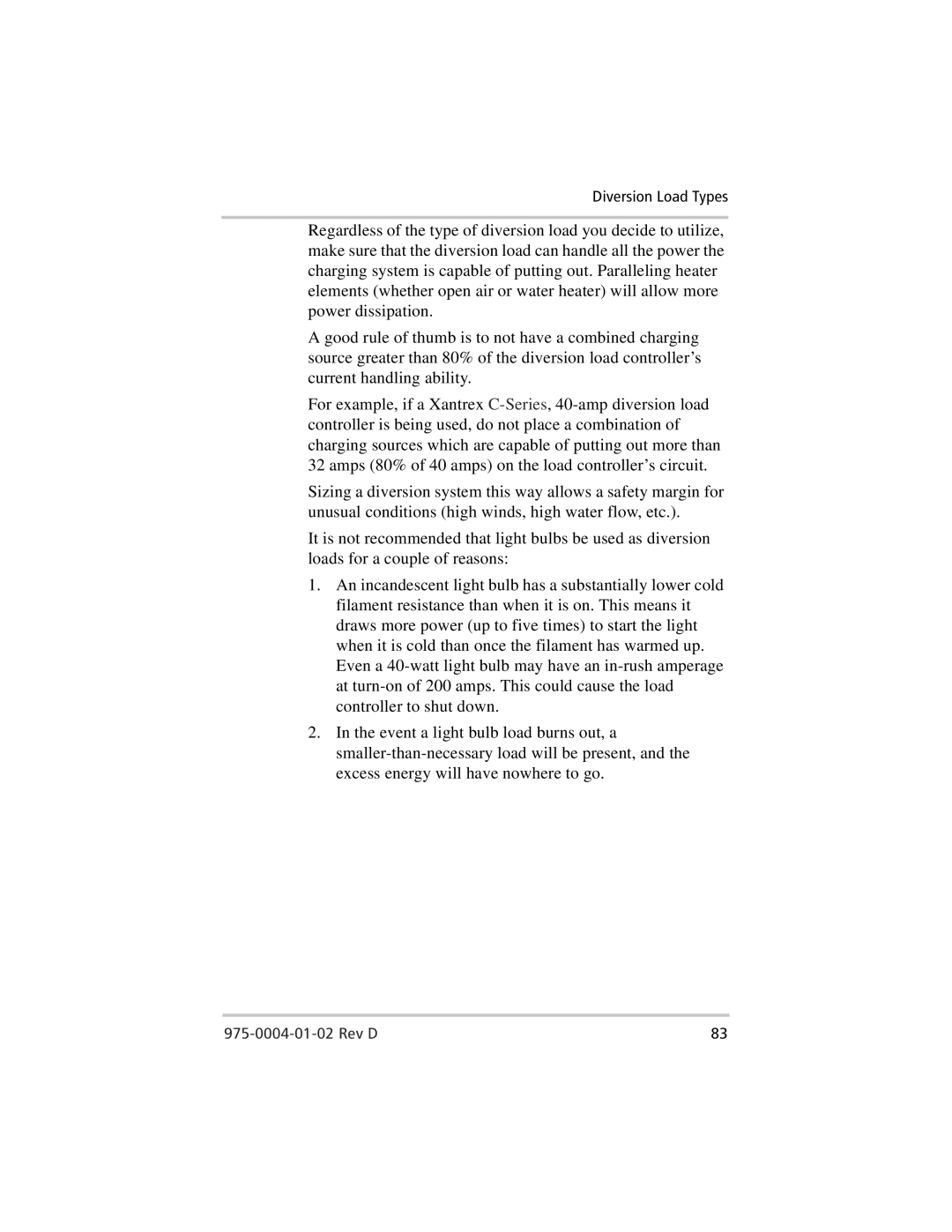C35, C60, C40 specifications
Xantrex Technology is a renowned name in the field of renewable energy solutions, particularly known for its robust line of solar charge controllers. Among its flagship products are the C-Series models: C40, C60, and C35. These charge controllers are specifically designed to optimize the use of solar panels, ensuring efficient energy conversion and battery management for off-grid renewable energy systems.The C40 model stands out with its impressive 40-amp rating, making it suitable for larger solar installations. It features advanced microprocessor technology, enabling precise control over battery charging and discharging processes. This model supports multiple battery types, including flooded lead-acid, gel, and sealed batteries, allowing users to customize their energy systems according to their specific requirements. One of the key characteristics of the C40 is its easy-to-read LCD display, which provides real-time information on system performance, battery voltage, and charging status.
Moving to the C60, this model offers a higher capacity, rated at 60 amps. The C60 is designed for larger applications, such as RVs, boats, and remote cabins, where higher power requirements are common. It shares many features with the C40 but is equipped with additional capabilities to enhance its versatility. One notable characteristic is the built-in load control, which allows users to manage power distribution to connected devices intelligently. The C60 also incorporates a temperature sensor that adjusts charging parameters according to the battery’s temperature, protecting it from overcharging and extending its lifespan.
The C35, while a bit smaller with a 35-amp rating, is designed to cater to medium-sized applications. It offers similar functionalities as its counterparts, including support for multiple battery types and an intuitive LCD display. The C35 is an ideal solution for homeowners and small businesses looking for reliable performance without the need for extensive power management.
All three models feature a durable design, built to withstand the rigors of outdoor use. With a focus on user-friendly operation, these charge controllers come equipped with straightforward installation processes, making them accessible to both seasoned professionals and newcomers to solar energy. Additionally, their capability to integrate with various solar panel systems makes them a flexible choice for diverse renewable energy applications. With Xantrex’s C-Series charge controllers, users can reap the benefits of solar energy while ensuring their battery systems remain healthy and efficient.

